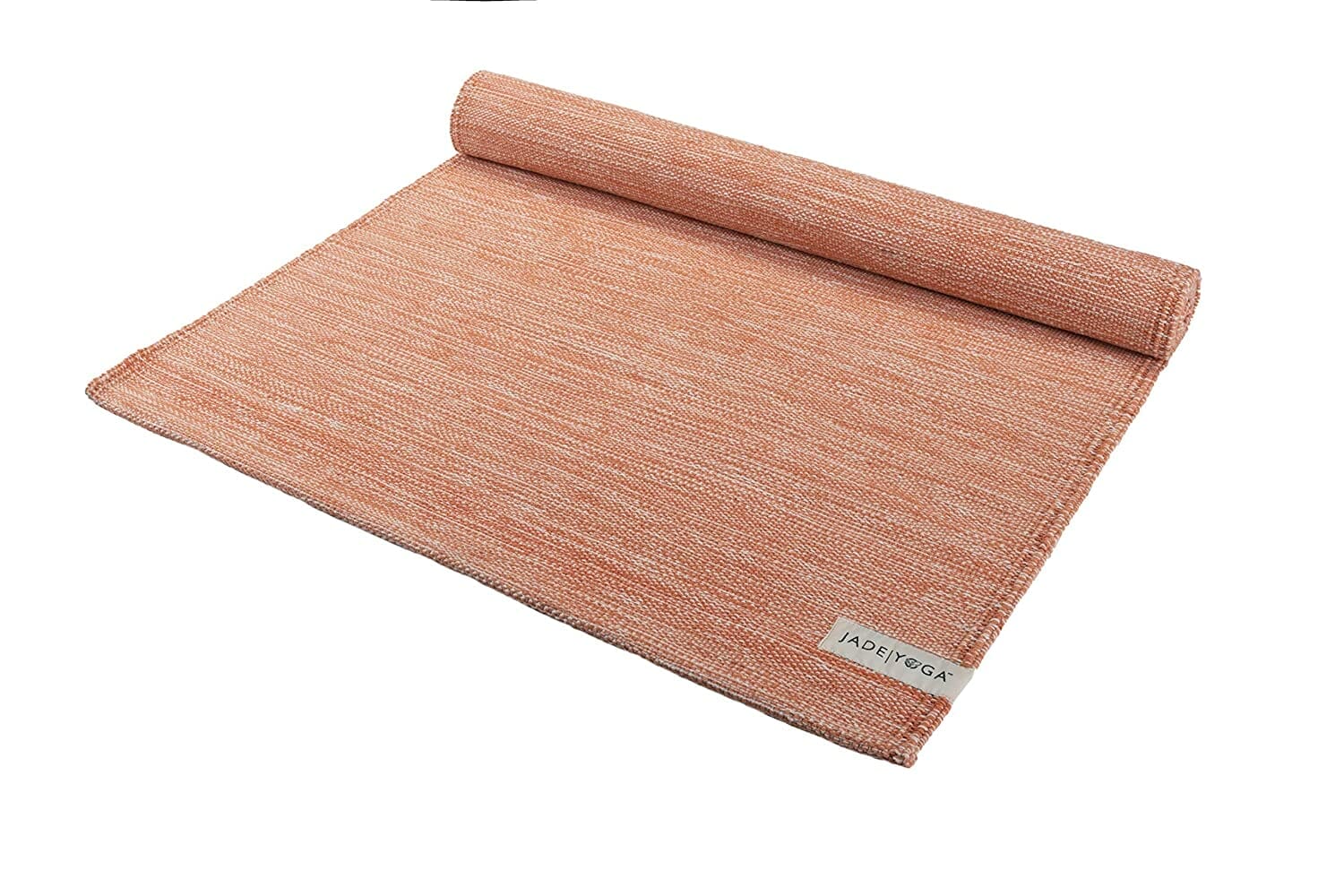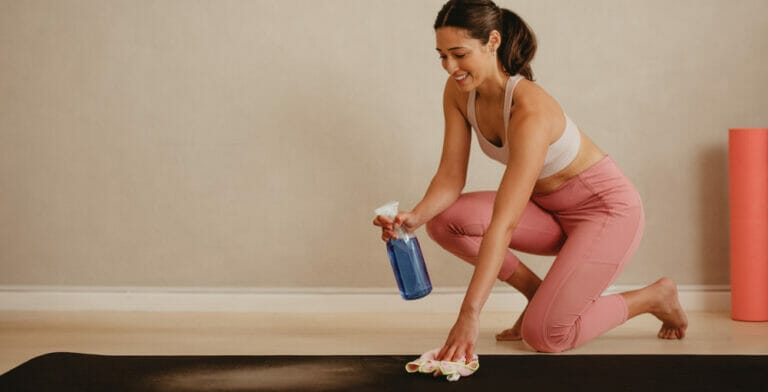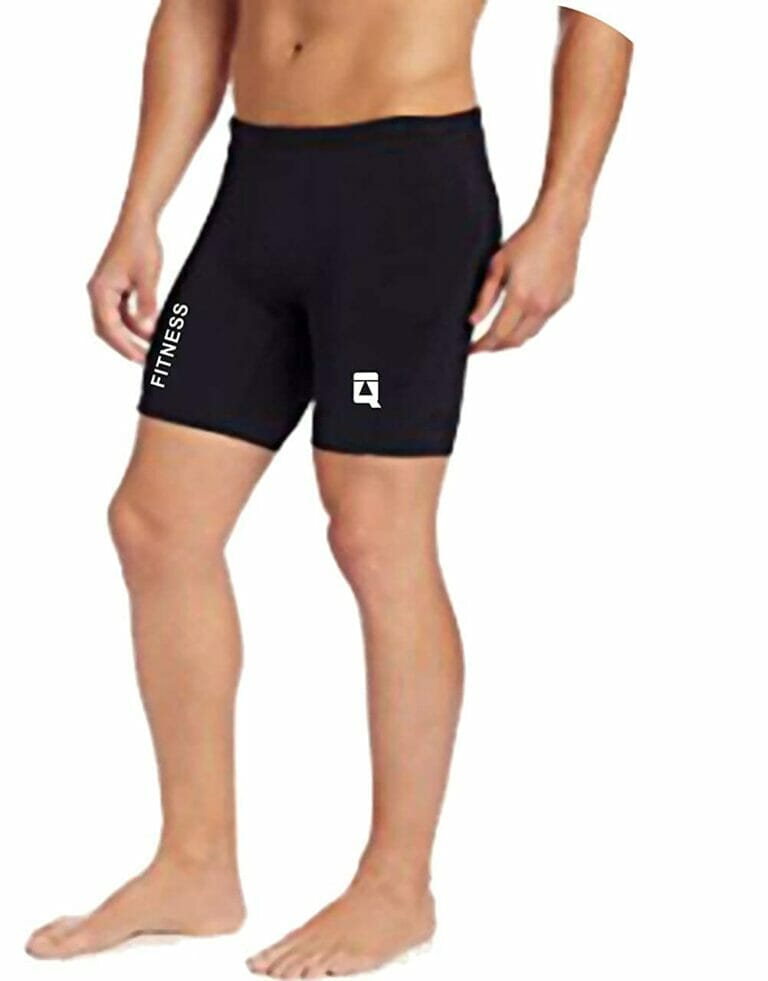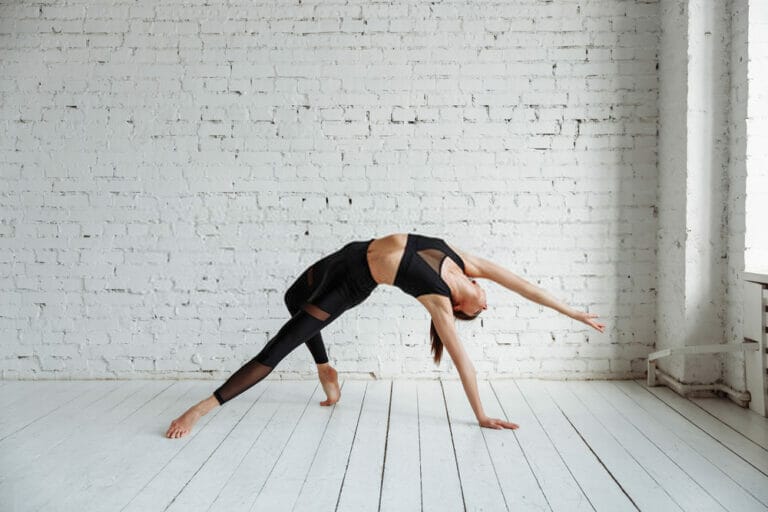Yoga Rug Vs Yoga Mat
YOGA RUG VS YOGA MAT: Which Is Better?
There are many different types of yoga mats on the market today. Some are thick, some are thin, some are made of rubber, some from natural materials like wood or bamboo, and others are even hybrid mats that contain a blend of natural and artificial materials.
But what exactly is the difference between a yoga mat and a yoga rug? A yoga mat is simply the surface upon which you lie out during your asana practice. On the other hand, a yoga rug is a thick, multi-layered fabric explicitly designed for use in a yoga class.
Many yoga rugs have a very thick pile on one side (the “side that faces up”) and a much thinner, almost “downy” pile on the other.
It allows your body to sink right into the rug, providing maximum support and cushioning. Many people who use rugs in addition to mats report an improvement in their asana practice.
Why? Because using the rug makes it easier to stay in the correct posture and position. It also provides a more even distribution of pressure, reducing the chance of muscle or joint discomfort. If you use mats exclusively, you may still experience some aches and pains due to uneven pressure points.
That’s why many yoga instructors recommend using both a mat and a rug. However, let us go into more detail and look at the significant differences between rugs and mats.
What is a Yoga Mat?
- Extra thick, cushy floor mat in Black for yoga, gym, and everyday exercise
- 1/2 inch thickness offers comfortable padded support and shock absorption; textured surface provides extra traction
- Durable foam construction offers stretchability and springs back into shape
- Elastic strap for secure rolled-up mat storage and easy over-the-shoulder carrying
- Wipes clean easily
A yoga mat is simply a piece of fabric used to provide traction and cushioning in the practice of yoga, a form of exercise that includes physical movements and meditation.
Yoga mats come in all different sizes, shapes and colours and typically have non-slip surfaces (either through friction or the use of rubber or plastic).
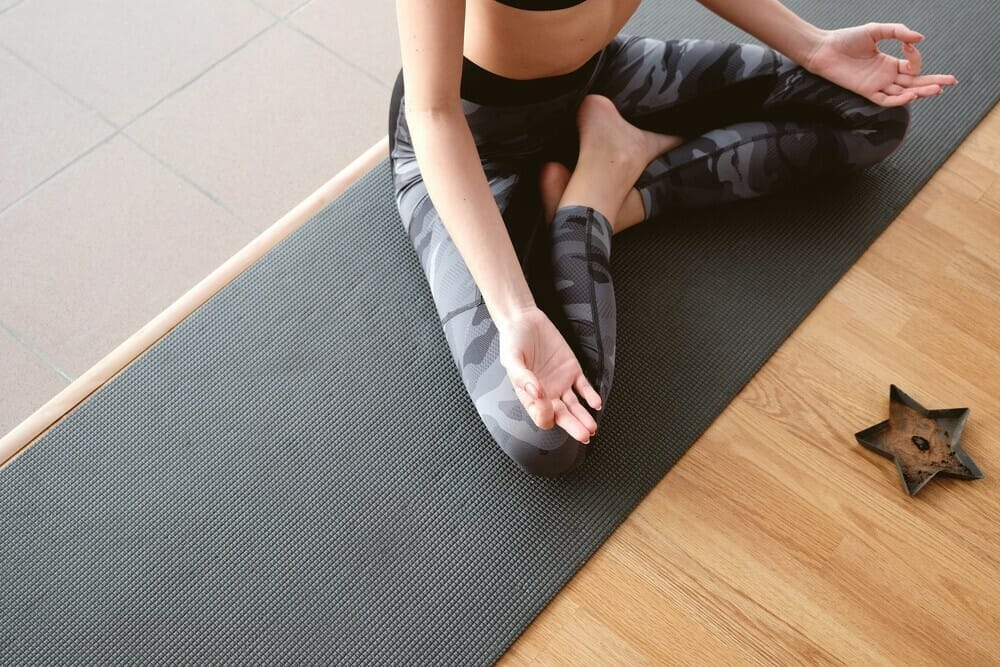
Most yoga mats also have a surface coating which further increases traction. The most common materials for mat surfaces are natural rubber, polyurethane, and PVC (although it is worth noting that PVC is generally only used in inexpensive, low-quality mats).
These are also eco-friendly yoga mats made of sustainable materials like tree rubber and recycled rubber.
It helps you maintain your balance while performing asanas (poses). Students choose the thickness of their yoga mats based on personal preference regarding how much padding they need.
For example, if you want extra cushioning, choose a thicker mat, whereas if you wish maximum traction, go with a thinner one. In addition, some mats are very lightweight, meaning that they are easy to transport and move around.
What is a Yoga Rug?
- Absorbent surface, great for sweaty hands and feet
- Fold to use for Shoulder stand or as a meditation pad, use over a yoga mat or on its own
- Cotton fabric is durable and long lasting, thick and sturdy, resists bunching
- Latex-free
- Made in India
A rug is the opposite of a yoga mat. It’s a thick fabric pad with loops of cord sewn into it for use in yoga. Jam-up cushions or bolsters may also be attached to the rug for added comfort.
A rug is for you to lie upon during your asana practice, providing extra support and cushioning in your body.
Yoga rugs can be designed as one solid piece of material or made up of two parts: an outer layer usually made from natural materials like cotton and nylon and a thinner inner layer (often made from synthetics) that you lie down upon during your practice.
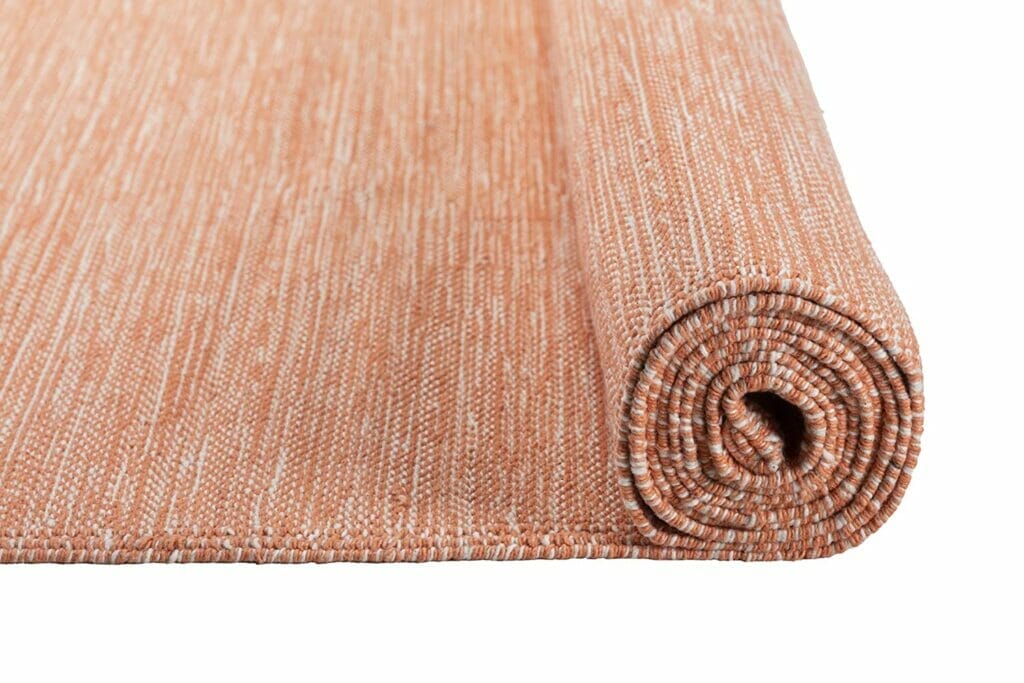
Yoga rugs are usually in the form of a rectangular or square pad that measures anywhere from 60″ to 15″ wide. The rug is generally more comprehensive than it is tall. You can find yoga rugs in various colours and designs such as prints, patterns, and solid colours like black, white, and beige.
Some rugs come with flocking or some extra padding attached to the top sides of the pad to provide extra cushioning for your knees and shins. Yoga rugs are usually relatively lightweight, which means they are easy to transport.
Yoga Mat vs Yoga Rug
Benefits of a Yoga Mat:
Here are some of the benefits of using a standard yoga mat for your asana practise:
Yoga mats have plenty of padding
Yoga mats typically have more cushioning than yoga rugs. In addition, they are thicker, which provides plenty of padding to help reduce impact and pressure in the knees while performing asanas.
Yoga mats provide extra grip
Most yoga mats have a non-stick surface, making it easier to maintain balance in poses. Yoga mats usually have rubber or plastic grips on the top of the mat. Most yoga mats weigh less than 10 pounds, making them easy to move around when performing asanas.
There are more varieties of yoga mats to choose from
There are many different yoga mats to choose from and are made with various materials, colours, and textures.
There is also a wide variety of styles to choose from, such as regular, mat towel, travel mat, and sticky mat.
Benefits of a Yoga Rug
Now, let’s take a look at some of the benefits of using yoga rugs:

A yoga rug is more traditional
A yoga rug provides a more traditional yoga practice experience. They can be used anywhere, but a yoga rug is explicitly used in a yoga class.
Coaches may also select sure rugs they want their students to wear during class, which helps track their progress while practising asanas.
The cotton of a rug feels more natural
A yoga rug is made entirely synthetically, and there are no natural materials used in its construction. For example, the cotton used in a rug does not feel as natural and organic as the cotton used in a yoga mat.
Yoga rugs are best for jump backs, jump forwards, and upward dog
Yoga mats are usually made with a slippery rubbery texture to provide traction. It can sometimes be challenging to maintain your balance in jumps and asanas because it is hard to know your exact centre of gravity.
Yoga rugs are designed especially for jump backs, jump forwards, and upward dogs, which helps you plant your feet firmly into the rug and remain balanced.
A yoga rug is usually more absorbent
Yoga rugs are made of plastic, and the material can be more absorbent than a synthetic yoga mat. In addition, yoga rugs are easier to clean than yoga mats, making them ideal for people who need to wash their yoga rugs frequently.
Yoga rugs are easier to wash in the machine
Yoga mats are made of rubber or PVC, which are very difficult to wash in a washing machine. However, most yoga rugs are easily washable in a washing machine, and some even come with instructions on how to do so.
So, Which is Best?
The answer is both. Yoga mats and yoga rugs are great options for different reasons. Choose the one you like best based on your personal preferences and needs. Yoga mats are of various styles, colours, sizes and thicknesses to suit all different types of yoga practitioners.
You can also find a variety of patterns, prints, and other designs that make the mat feel more personalized or playful for your needs as well.
Are Yoga Rugs Better for the Environment?
The answer is Yes. Yoga rugs are made of a sustainable material specially created to make yoga mats, but they are also non-toxic, non-pregnant, and non-harmful to the environment. It’s a synthetic yoga mat that will not harm you in any way while you perform asanas on it.
The best part is that most yoga rugs are also made in USA or Canada.
In the rugs and yoga mats industry, there are various options available. Some companies even sell yoga mats made with plastic instead of natural cotton that absorb more.
It may be an option for you if plastic is easier to clean, but the lightweight hugging materials make these yoga mats more portable and versatile.
It’s important to note that plastic does not give you the same level of cushioning as a cotton or latex rug does.
When you're practising your asanas on a yoga mat, you need to land on your heel for it to provide the same cushioning benefits as its natural counterpart.
However, if you practice yoga with your hands and feet on the floor, you will often not land directly on your heel.
Do Yoga Rugs Last Longer than Mats?
Yoga rugs tend to last longer than yoga mats because they are made of a non-slip material, and the top surface of a yoga mat is usually made out of rubber which makes it hard for people to maintain their balance during practice.

A yoga mat can easily be torn or damaged, whereas a yoga rug is tough to tear. In addition, the yoga rug's material is very durable and yet lightweight, which makes them easier to transport from one place to another.
Conclusion:
There are many different yoga mats and rugs, so choosing the one you like most is essential. They are great for both beginners and seasoned practitioners. In addition, many of them come with plenty of padding or extra grip that makes it easier to maintain your balance while you’re practising asanas.
So, if you're looking for a traditional yoga mat or a unique patterned yoga mat, you can find it. But, first, you need to make sure that you read the reviews and choose the one that feels best for your practice.

